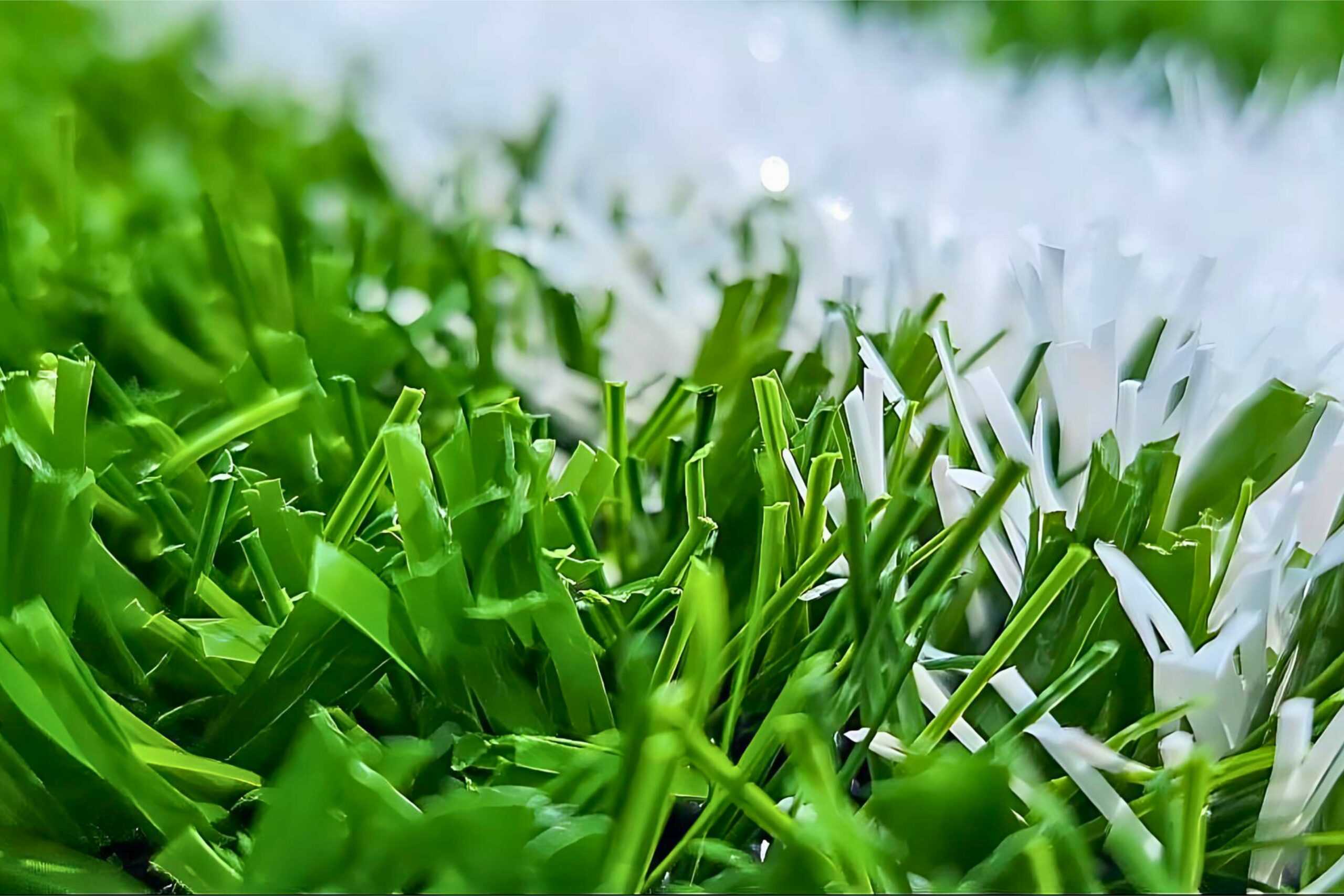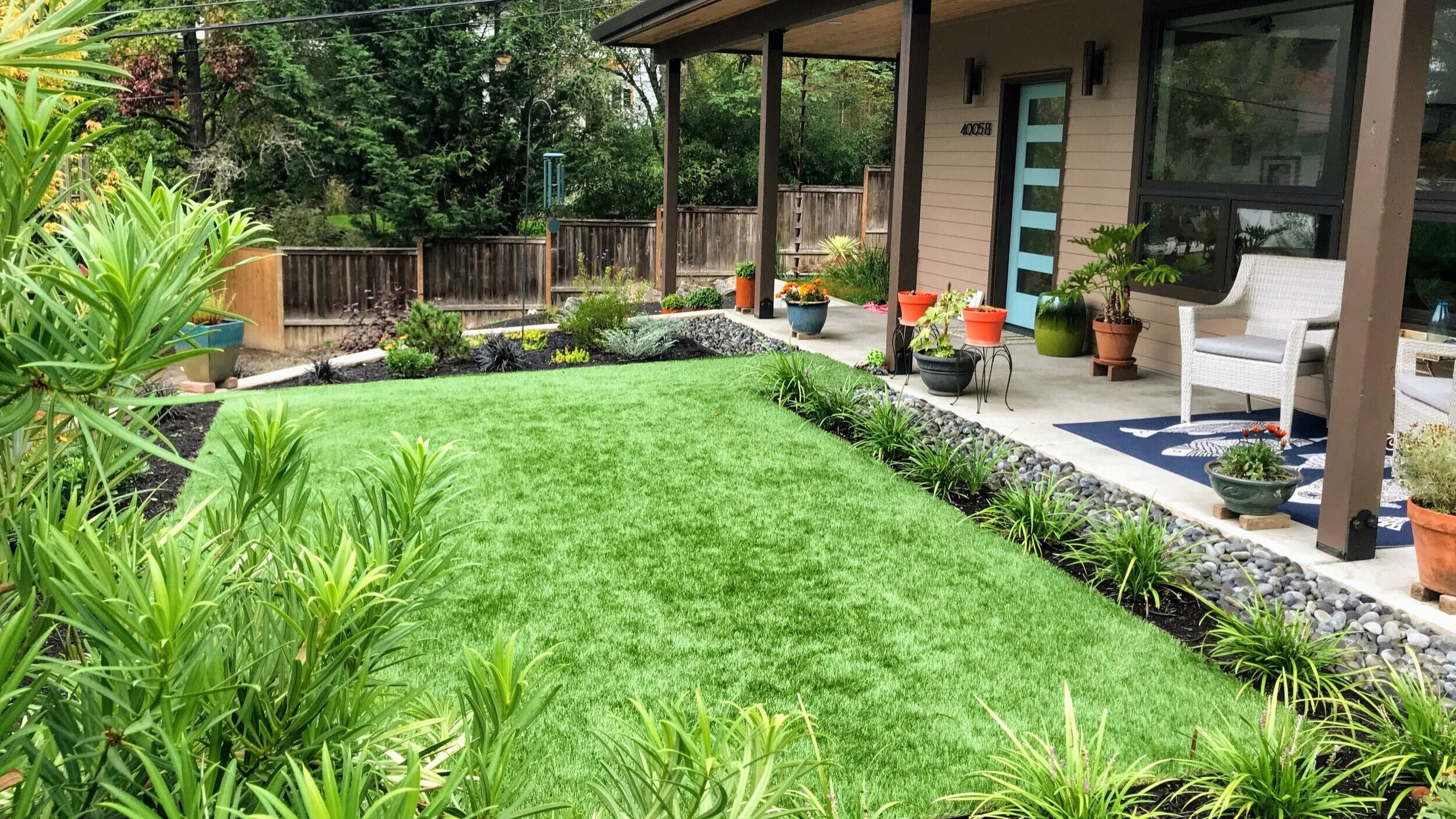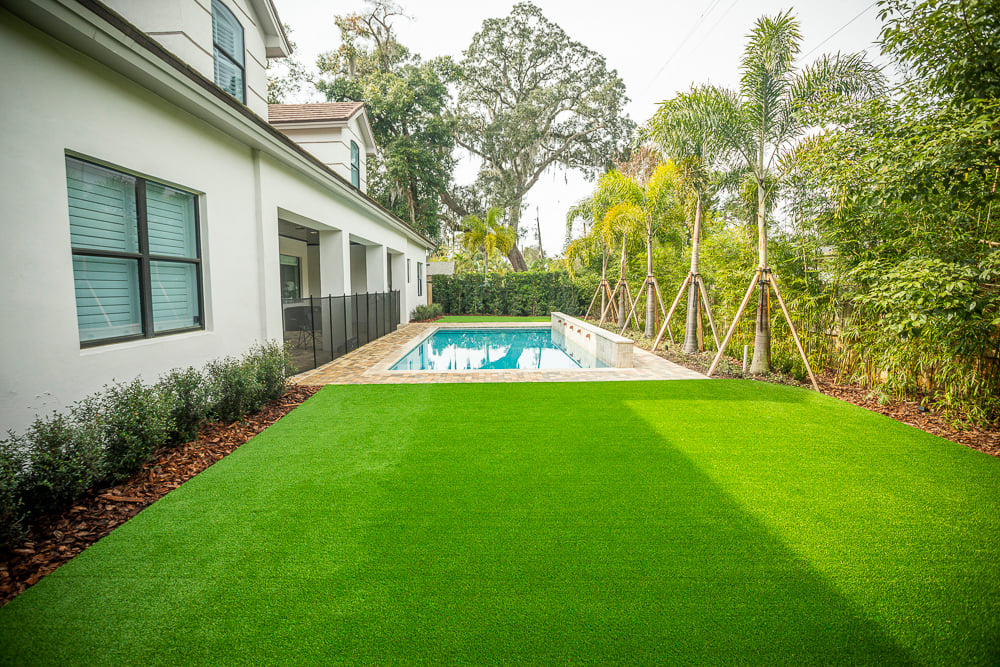Experience a Perfect Lawn with Arizona Artificial Turf for Any Outdoor Space
Experience a Perfect Lawn with Arizona Artificial Turf for Any Outdoor Space
Blog Article
See Why Homeowners Prefer Synthetic Grass for Lasting Landscape Design Practices
As homeowners progressively focus on sustainability in landscape design, artificial grass has actually emerged as a compelling option to standard lawn. Its capacity to conserve water, decrease maintenance initiatives, and reduce ecological impact settings it as a functional option for those seeking green remedies. The aesthetic appeal and versatility of artificial turf provide to varied style preferences. Nonetheless, the ramifications of this shift expand past mere convenience and aesthetic appeals, prompting a closer exam of exactly how these choices affect wider environmental end results. What continues to be to be explored is the complete scope of advantages that synthetic grass can supply to property owners and the environment alike.
Water Preservation Benefits
Among one of the most significant benefits of fabricated turf is its role in water conservation. Typical grass lawns need significant quantities of water to preserve their rich look, typically causing overuse of neighborhood water resources, particularly in deserts. In contrast, synthetic grass removes this demand totally, as it does not call for irrigation. This not just saves water yet likewise minimizes the stress on local water supply, especially during drought conditions.
Furthermore, the setup of synthetic grass can contribute to an extra lasting landscape. Home owners can dramatically decrease their water expenses, permitting reallocation of resources to various other ecological initiatives or household usages. Furthermore, synthetic turf is designed to hold up against numerous climatic problems without the demand for extra watering, making it a suitable choice for areas dealing with water scarcity.
The ecological benefits expand beyond prompt water cost savings. By reducing water intake, synthetic grass assists to mitigate the influences of climate adjustment, preserving essential environments that are threatened by extreme water extraction. As sustainable landscape design methods obtain traction, synthetic grass arises as an accountable selection for property owners looking for to create eco-friendly outside rooms.
Minimized Upkeep Efforts
Fabricated grass significantly minimizes upkeep initiatives contrasted to traditional lawn yards. With artificial turf, home owners can eliminate the time-consuming tasks linked with all-natural landscape design, such as mowing, fertilizing, and weeding. This not only conserves valuable time however additionally reduces physical labor, making lawn care easily accessible for individuals of any ages.
Conventional lawns require constant cutting to maintain an aesthetically pleasing elevation, whereas man-made grass remains consistently lavish without the requirement for cutting. Additionally, home owners no longer need to use chemicals or fertilizers, which are often called for to keep natural yard healthy.
Furthermore, synthetic grass is long lasting and resilient, calling for minimal maintenance beyond periodic brushing and washing to remove particles. This ease of upkeep enables homeowners to appreciate their outdoor rooms without the continuous worry of maintenance, offering more time for recreation and household activities. Eventually, the decreased upkeep efforts linked with synthetic turf make it an enticing choice for those seeking a low-maintenance, aesthetically appealing landscape.

Ecological Impact Decrease
There is a growing acknowledgment of the environmental advantages associated with synthetic grass, particularly in regards to water conservation and reduced chemical usage. Conventional grass call for considerable amounts of water, especially in drought-prone regions, resulting in raised pressure on regional water sources. On the other hand, synthetic lawn gets rid of the requirement for watering, drastically minimizing water consumption and promoting sustainability.
Furthermore, standard lawn maintenance commonly entails the application of chemicals, herbicides, and plant foods, which can contribute to soil and water contamination. Synthetic grass mitigates this environmental risk by requiring very little upkeep and practically getting rid of the requirement for dangerous chemicals. This not just boosts dirt wellness yet additionally shields neighborhood ecosystems from toxic runoff.
Moreover, the manufacturing of all-natural yard yards commonly involves using fossil fuels for mowing and landscaping equipment, more adding to greenhouse gas exhausts. By picking fabricated lawn, home owners can dramatically decrease their carbon impact related to lawn treatment activities.
Aesthetic Appeal and Versatility
In enhancement to its ecological advantages, synthetic grass uses substantial aesthetic allure and flexibility for landscape design. House owners can accomplish a rich, eco-friendly look year-round, removing the seasonal changes frequently connected with natural turf. This constant visual not just boosts the aesthetic appeal of a residential property yet also adds view it now to a refined and well-kept look.
Furthermore, synthetic grass is readily available in a selection of designs, appearances, and shades, permitting modification to fit private preferences and design themes Resources - Arizona turf. Whether made use of in property yards, industrial areas, or recreational areas, it can seamlessly incorporate right into diverse landscaping layouts, from modern-day minimalist to lush exotic setups
The flexibility of synthetic turf expands beyond mere look; it can be set up in various locations, consisting of roofs, outdoor patios, and even interior areas, producing opportunities for one-of-a-kind landscape design solutions. In addition, it is appropriate for a series of tasks, from children's backyard to pet-friendly atmospheres, giving performance without compromising design.
Ultimately, the visual appeal and adaptability of synthetic lawn make it an appealing option for house owners seeking sustainable landscape design solutions that do not compromise beauty for environmental duty.

Long-Term Cost Financial Savings
One of one of the most compelling benefits of synthetic grass is its possibility for long-lasting price savings. Unlike all-natural turf, which calls for routine upkeep-- including mowing, watering, feeding, and insect control-- fabricated lawn considerably reduces these continuous expenditures. House owners can save a significant amount on water costs, especially in areas where water deficiency is a pressing concern. The elimination of grass care services better adds to monetary cost savings, as there is no need for customized equipment or labor.
In addition, synthetic grass has a life-span of 15 to 25 years, depending on its high quality and use. This durability lessens replacement expenses, making it an extra affordable choice in the future. In addition, the initial investment in synthetic grass can often be recouped through the cost savings accumulated gradually.
While the in advance expense may appear greater compared to sod installment, the collective cost savings from decreased maintenance and water use commonly exceed these initial expenses. Eventually, the adoption of fabricated grass not only advertises a lasting landscaping solution yet also supplies home owners an economically savvy alternative that lines up with long-term budgeting objectives.
Final Thought
Synthetic grass arises as an engaging choice for sustainable landscape design, offering considerable benefits in water conservation, minimized maintenance efforts, and reduced ecological impact. As communities progressively focus on ecologically pleasant techniques, the adoption of man-made grass stands for a modern step towards accomplishing resistant and sustainable landscapes.
Additionally, man-made lawn is designed to stand up to various weather problems without the demand for supplementary watering, making it site here a perfect choice for regions encountering water deficiency. (Arizona turf)

Synthetic lawn arises as a compelling alternative for lasting landscaping, providing significant advantages in water conservation, minimized maintenance efforts, and lessened environmental effect.
Report this page